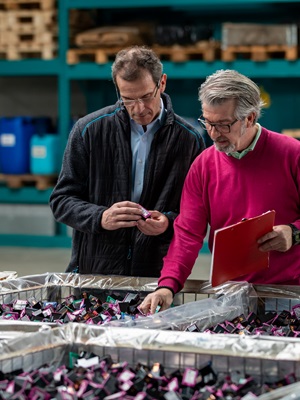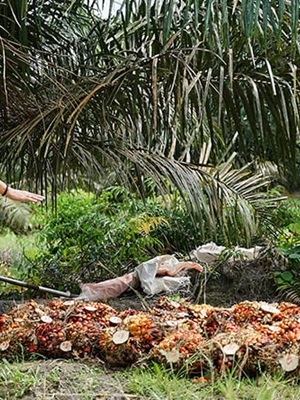
Photo by Priscilla Du Preez 🇨🇦 on Unsplash
I. The Power of Sustainability Communication:
A. Unlocking the Potential
Given how quickly the world is changing today, action on sustainability is clearly needed. That being said, excellent intentions alone are insufficient. The foundation of a successful sustainability journey is effective communication. It encourages openness, increases stakeholder trust, and eventually motivates the much-needed action.
Consider these compelling statistics:
• 83% of worldwide customers expect businesses to address social and environmental issues in their communications, according to a Cone Communications report from 2022.
• 78% of workers said they would be more likely to stick with a company that was dedicated to having a positive social impact, according to research by Edelman.
Effective communication gives stakeholders the opportunity to comprehend the "why" behind sustainability initiatives. It simplifies difficult social and environmental issues into language that audiences can relate to. In the modern world of greenwashing concerns, trust is a crucial component that is fostered by transparency.
Let's examine a practical illustration. Renowned for its dedication to environmental activism, Patagonia is an outdoor gear brand. They don't just promote recycled materials as part of their communication strategy. Patagonia appeals to the passion of the outdoors in their audience through compelling narrative. Their clients are motivated to become environmental champions by their campaigns, which emphasise the threats that climate change brings to wild regions. This strategy has not only increased brand loyalty but also sparked an outdoor industry trend towards responsible consumption.
The field of sustainability communication is not one-size-fits-all. Strategies that work customise communications to appeal to various audiences. Through the utilisation of many communication platforms, including social media, focused advertising, and captivating content, organisations may expand their audience reach and stimulate a group movement towards a circular economy and more environmentally friendly ways of living.
B. Accelerating Change
The true power of sustainability communication lies in its ability to move beyond awareness and spark concrete action. Here's how effective communication can act as a catalyst for accelerating the transition to a circular economy and more sustainable practices:
1. Raising Awareness and Educating Stakeholders:
Education is the cornerstone of every behavioural modification. Communication regarding sustainability can be extremely important in bringing attention to social and environmental issues. Communication has the potential to enable stakeholders to comprehend the consequences of their decisions by demystifying difficult subjects like resource depletion and climate change.
For example, a 2023 Accenture survey found that 63% of worldwide consumers are willing to pay extra for sustainable products if they are aware of the advantages for the environment or society. By bridging this knowledge gap, effective communication techniques may transform the benefits of sustainability into concrete value propositions for customers.
2. Shifting Mindsets and Behaviours Towards Responsible Consumption and Production:
The goal of sustainability communication is to motivate action rather than just raise awareness. Through presenting prosperous instances of circular economy methodologies and emphasising the financial and ecological benefits of sustainable merchandise, communication has the power to encourage consumers to make ethical purchases.
Take Unilever's "Love Beauty and Planet" campaign as an example. This product range encourages eco-friendly behaviours including water saving and uses recycled packaging. By use of focused communication and captivating promotional materials, Unilever has effectively impacted customer behaviour, promoting a transition towards more environmentally friendly personal hygiene products.
3. Encouraging Collaboration and Innovation Amongst Businesses, Governments, and NGOs:
Working together, all sectors must adapt to the circular economy successfully. Businesses, governments, and non-governmental organisations can engage in discourse and knowledge sharing through sustainability communication. Through efficient channels of communication, different stakeholders may exchange best practices and problems and collaborate to generate creative solutions and build a more sustainable future.
One well-known supporter of circular economies, the Ellen MacArthur Foundation, uses communication as a vital instrument. To hasten the adoption of circular practices, they cooperate with a range of partners, organise international conferences, and produce incisive reports. This cooperative strategy, which is fueled by effective and persuasive communication, has made a substantial contribution to the increasing popularity of circular economies.
A more sustainable way of life and a circular economy can be quickly adopted thanks to the strong force of sustainability communication, which raises awareness, changes behaviour, and promotes teamwork.
II. Benefits of Sustainability Communication
Stakeholders involved gain concrete benefits from effective sustainability communication, which goes beyond simple storytelling. Let us investigate the ways in which effective communication enables every organisation to make a positive contribution towards a sustainable future.
A. ESG Compliance: Building Transparency and Trust with Investors
Investors are increasingly using Environmental, Social, and Governance (ESG) principles as a global standard. Companies that communicate sustainability well can show that they are transparent and making progress towards ESG compliance. This involves disclosing precise data on social responsibility programmes, environmental impact reduction, and strong governance procedures.
According to a Morgan Stanley research from 2023, new investments in sustainable funds globally drew a record $5.7 trillion in 2022. By properly communicating their ESG initiatives, businesses set themselves up to draw in this expanding group of socially conscious investors. Transparent communication also increases stakeholder trust, which benefits the organization's reputation and brand image.
B. Government & Policy: Enabling Informed Decisions and Public Support
For policymakers to be empowered, sustainability communication is essential. Governments are able to collect information, comprehend the effects of sustainability programmes, and make educated judgements when developing social and environmental policies when corporations and non-governmental organisations communicate in a clear and straightforward manner.
One example of how effective communication may be is seen in Iceland's geothermal energy programme. The government of Iceland succeeded in gaining broad public support for geothermal research and development by means of public education programmes and open data sharing. This eventually caused the nation's need on fossil fuels to be significantly reduced.
C. Businesses & Investors: A Competitive Edge and Sustainable Growth
Consumers are increasingly basing their purchases in the current market on sustainability values. Good communication gives companies a competitive edge with consumers that care about sustainability by showcasing their dedication to social and environmental responsibility. 66% of global customers are willing to spend more for sustainable products, according to a 2022 NielsenIQ survey.
Furthermore, top talent prefers to work for organisations that share their values, therefore transparent communication about sustainability initiatives helps to draw and keep this talent. This promotes employee engagement and helps a business remain sustainable and grow over the long run. Furthermore, effective ESG performance communication can open doors to investment opportunities from socially and environmentally conscious investors, promoting even more sustainable corporate practices.
D. Individuals & Communities: Knowledge, Empowerment, and Action
People who are empowered to make educated decisions and take an active role in the sustainability movement are those who receive sustainability communication. Communication gives people the information and resources they need to live more sustainably by making sustainable practices and the effects that daily actions have on the environment and society plain and understandable.
Think about how well community composting initiatives have worked. Campaigns for effective communication can inform locals about the advantages of composting and provide them the tools they need to get involved. This lessens the amount of waste dumped in landfills and promotes a feeling of collective responsibility for finding environmental solutions.
Effective communication about sustainability is beneficial to all parties involved. In addition to empowering people and organisations to collaborate towards a more sustainable future, it promotes openness and trust. To optimise the effectiveness of these communication initiatives, the significance of strategically assigning sustainability communicators will be discussed in the following section.
III. The Role of the Sustainability Communicator
To optimise the impact of sustainability communication, a committed workforce—the sustainability communicators—is necessary, just as a well-oiled machine needs competent operators. By developing concise, powerful messages that connect with a wide range of audiences, these experts serve as a liaison between an organization's sustainability initiatives and its stakeholders.
A. Meaningful Deployment: Strategizing for Impact
1. Tailored Communication Plans: There is no one-size-fits-all strategy used by talented sustainability communicators. The key reason is that sustainability challenges affects multiple stakeholders and require iterative collaborative solutions. Sustainability communicators know how to create plans for strategic communication that are aimed at particular audiences. Knowing the requirements, passions, and communication styles of consumers, workers, investors, and legislators is necessary for this. While consumer-facing marketing may make use of emotive appeals and storytelling, investor communications may concentrate on comprehensive ESG data and reports.
2. Multi-Channel Storytelling: Being able to use a variety of communication platforms effectively is essential for success in today's ever-changing media world. Making the most of social media platforms, creating interesting content for publications and websites, and creating effective PR efforts are all part of this. Among this toolkit, storytelling is a really effective one. Communicators can get a better connection with audiences and encourage empathy and action by revolving stories around the organization's sustainability journey.
3. Measuring and Tracking Effectiveness: One cannot leave the effectiveness of communication efforts to chance – ability to understand the metrics of success is critical. Sustainability communicators are adept at creating tracking tools and data to gauge how successful their initiatives are. This could entail measuring audience comprehension and behavioural changes through surveys, social media involvement, or website traffic analysis. Communicators may maximise their effect and improve their methods by measuring success.
B. Importance of Expertise: Beyond the Craft
Although the ability to communicate effectively is essential, good sustainability communicators do more than just create memorable taglines. They have a thorough awareness of social responsibility, environmental concerns, and sustainability concepts. They are able to convert difficult sustainability concepts into messages that audiences can understand thanks to this knowledge base.
Consider a sustainability communicator who is assigned to publicise a business's latest recycling programme. If they don't understand the circular economy and best practices for waste management, their communication efforts may not be credible or successful in changing people's behaviour. Notwithstanding, a communicator possessing the requisite experience can proficiently convey the ecological advantages of recycling and enable customers to take an active role in the endeavour.
IV. Current Challenges in Sustainability Communication
Sustainability communication has enormous potential, but there are some obstacles in the way that could reduce its efficacy. Here, we'll look at two major issues: the proliferation of false information and the ubiquity of "greenwashing."
A. Greenwashing: Eroding Trust and Undermining Progress
The dishonest practice of businesses inflating or inventing their sustainability credentials is known as "greenwashing." A startling 90% of sustainability claims made in marketing could be deceptive, according to a 2022 study by TerraChoice. The widespread use of "greenwashing" damages consumers' faith in sustainability initiatives overall. Consumers who are inundated with misleading information tend to lose faith in sustainability messaging, which impedes sincere efforts to move towards a more sustainable future.
Transparent and verifiable communication is essential to preventing greenwashing. Businesses need to be open and honest about their journey towards sustainability, providing a clear description of their objectives, accomplishments, and obstacles encountered. Establishing confidence and trust with stakeholders can be further enhanced through independent verification and adherence to recognised sustainability standards.
B. Misinformation & Falsehoods: Navigating the Information Age Labyrinth
While information exchange has become more accessible thanks to the digital age, lies and incorrect information have also found a home there. It is an issue that sustainability faces. Consumers may get confused and unable to make wise decisions if they are presented with false information about environmental problems and untested technical solutions.
Consumer participation in waste management programmes, for example, may be deterred by the dissemination of false information on recycling capacities. This problem requires aggressive communication tactics to be solved. Sifting through data, locating reliable sources, and creating fact-based messaging to counter false information are skills that sustainability communicators must master. Individuals can be empowered to distinguish truth from untruth in the information age by working with fact-checking organisations and supporting media literacy efforts.
We can create a future where sustainability communication builds trust, motivates action, and speeds up the shift to a circular economy and more sustainable lifestyles by recognising and resolving these issues.
V. Why ASEAN Lags Behind in Sustainability Communication
As the global discourse on sustainability grows, it is generally noted that people in the ASEAN region area finds it difficult to remain relevant to their audience, especially when it comes to communicating sustainability. Here, we investigate the following two crucial causes of this lag:
A. Limited Awareness: A Missed Opportunity
In many of the ASEAN nations, the idea of sustainability communication is still relatively new. Its capacity to bring about constructive change is not fully appreciated, and there is a dearth of knowledge regarding industry best practices. This information gap prevents companies and organisations from realising the strategic importance of good communication in accomplishing their environmental objectives. Sustainability communication is not about public relations but needs to be part of the corporate vision of how the organisation intends to perform its economic activities with responsibility and impact to the communities which they serve.
Just 38% of companies in the region have a specific strategy for communicating sustainability, according to a 2023 poll conducted by the ASEAN Business Council. Missed opportunities to involve stakeholders, establish credibility, and motivate action on important sustainability challenges result from this ignorance.
B. Dispelling the Myths: Communication as an Investment, Not a Cost
One prevalent misunderstanding about sustainability communication is that it's just another kind of public relations (PR) or that it's an expensive undertaking. Nevertheless, this perspective overlooks the long-term advantages that good communication can provide.
Sustainability communication is a planned, continuous endeavour rather than a one-time event. Communication can secure customer loyalty, draw in ethical investors, and eventually propel long-term company growth by promoting openness and trust. Take Unilever's "Sustainable Living Plan" campaign as an example. Unilever has seen a 70% rise in the growth rate of their sustainable living products in addition to improving their brand image through open and honest communication of their sustainability goals and progress.
Moreover, typical PR is not the same as sustainable communication. PR is primarily concerned with controlling public perception; however, sustainability communication transcends image control. It includes clear and consistent messaging together with a sincere dedication to social and environmental responsibility.
Businesses and organisations in ASEAN may use the power of sustainability communication to propel positive change and quicken their sustainability journeys by realising the true worth of this investment.
VI. Leading the Change in ASEAN: Bridging the Gap with Effective Communication
Although communicating about sustainability can be difficult in ASEAN, there is a lot of untapped potential in the region. Here, we look at how to close this divide and move ASEAN to the forefront of sustainability communication.
A. Thought Leaders: Shaping the Narrative
Thought leaders, or influential and knowledgeable proponents of sustainability, can be crucial in advancing the discourse. How to do it is as follows:
• Setting the Agenda: Thought leaders have the power to start important discussions about problems with sustainability and ASEAN-specific solutions. To frame the conversation and raise awareness, this could entail holding conferences, writing articles, or organising conversations.
• Amplifying Messages: Through the use of their platforms, such as keynote addresses, media appearances, and social media, thought leaders may spread important sustainability ideas to a larger audience and motivate action.
• Mentoring the Next Generation: Encouraging and guiding the upcoming cohort of sustainability communicators is crucial for sustained achievement. Thought leaders may help young professionals become effective advocates for sustainability communication by offering advice, sharing best practices, and giving them empowerment.
B. The Power of Storytelling: Connecting Hearts and Minds
Sustainability-related problems might seem overwhelming and are frequently complex. Storytelling about sustainability is a potent strategy for emotionally engaging listeners. Creating engaging stories about how our decisions affect the environment and society enables people to relate to the issues in a significant way. Effective storytelling can:
• Make Sustainability Relatable: Difficult topics are made approachable and motivate action by presenting actual instances of prosperous sustainability projects or the individual experiences of sustainability advocates.
• Motivate Behaviour Change: A significant factor in behaviour modification is emotional ties. People can be motivated to adopt sustainable behaviours in their daily lives and feel a sense of responsibility when they read stories.
The "Bye Bye Plastic Bags" campaign, started by a group of young entrepreneurs in Indonesia, is a perfect illustration of this. The ad used compelling narration and eye-catching imagery to draw attention to the harm that plastic pollution causes to the environment. Customers responded well to this, and as a result, the use of plastic bags decreased dramatically in the cities that took part.
C. Regulations: Combating Greenwashing for Transparency and Trust
Regulations can help encourage ethical sustainability communication, but in order to prevent strangling innovation, a participatory approach is crucial. Here are some things to think about:
• Code of Conduct: Governments, corporations, and non-governmental organisations can work together to create a regional code of conduct that will set forth specific rules for ethical sustainability communication practices. It requires the change of attitudes form the mindset of overarching “compliance” to a consultative and educational approach seeking common vision and alignment.
• Legislation against False Claims: Greenwashing can be prevented by enacting laws that penalise businesses for making false sustainability claims. This promotes openness and guards against deceiving customers. Clear signals need to be sent to the industries from comprehensive consultation to prevent future infractions.
• Public Education: Educating the public about greenwashing techniques gives people the opportunity to assess sustainability messaging critically and hold businesses responsible for their claims. Creating channels for public feedback and involvement is critical for innovation, implementation and sustained change management.
Through the establishment of a cooperative atmosphere that places a high value on openness, responsibility, and conscientious communication, ASEAN has the potential to provide the groundwork for effective sustainability communication strategies.
Effective and powerful communication is the key to moving ASEAN towards greater sustainability. The call to action that follows will detail doable actions that people and organisations can do to get involved in this movement and support sustainability communication in the ASEAN region.
VII. Encouraging Sustainability Communication in ASEAN: A Call to Action
There is no denying that sustainability communication has the power to lead ASEAN to a more sustainable future. But realising this potential calls for a concentrated effort. These are important actions we can do:
A. Building Capacity: Equipping Professionals for Success
It is imperative to close the skills gap. It is imperative that professionals acquire the requisite knowledge and practical abilities to effectively communicate sustainability. This can be accomplished by:
• Capacity Building Programs: Specialised training programmes on storytelling approaches, multi-channel communication tactics, and sustainable communication principles can be provided by universities, non-governmental organisations, and professional associations.
• Hands-on Learning: To help participants enhance their abilities and boost their confidence, these programmes should include hands-on tasks that let them apply what they've learned to actual situations.
B. Knowledge Sharing: A Circle of Support
A flourishing environment for collaboration and the sharing of knowledge are essential to the communication ecosystem. To help with this, we can:
• Knowledge-Sharing Platforms: Establishing virtual spaces for exchanging materials, case studies, and best practices can enable experts in the area to gain knowledge from one another's achievements and difficulties.
• Professional Industry Groupings: Collaboration between members of professional industry associations, stewardship or sustainability networks, and other groups can establish a "circle of help" in which members exchange expertise, encourage one another, and jointly develop creative approaches to communication.
One such organisation is the Thailand Business Council for Sustainable Development (TBCSD). The TBCDS gives Thai firms a platform to learn from each other's sustainability communication efforts and accelerate collective growth through knowledge-sharing workshops, conferences, and online tools.
C. Recognition and Awards: Celebrating Impact
Showcasing impactful environmental communication initiatives can inspire and motivate others to replicate their success. We can achieve this through a two-pronged approach:
• Recognition Programs: Establishing regional programs to acknowledge noteworthy sustainability communication efforts serves several purposes. These programs can:
o Highlight Best Practices: By featuring successful campaigns, they become a valuable resource for learning and emulation.
o Encourage Replication: Recognition inspires others to follow suit, expanding the adoption of effective communication strategies.
o Set Benchmarks: These programs help establish industry standards for impactful sustainability communication.
• Sustainability Communication Awards: Taking recognition a step further, awards acknowledge and celebrate outstanding contributions from individuals and organizations. This approach brings additional benefits:
o Increased Awareness: Awards generate wider public attention to the importance of effective communication in achieving sustainability goals.
o Underscoring Importance: The award itself signifies the critical role communication plays in driving positive environmental change.
A great example of this approach is the ASEAN Business Awards' "Leadership in Sustainability Reporting & Communication" category. This program doesn't just recognize successful communication, it sets a high bar for aspiring sustainability communicators across the region.
By investing in capacity building, fostering knowledge sharing, and celebrating impactful communication through recognition and awards, we can cultivate a thriving ecosystem for sustainability communication in ASEAN. This, in turn, empowers individuals, businesses, and governments to collaboratively work towards a more sustainable future for the region and beyond.
VIII. Call to Action: Sustainability Communication – The Engine of the Sustainability Pivot
Achieving a sustainable future for ASEAN requires effective and persuasive communication. The possibility of sustainability communication to hasten the sustainability pivot and promote a move towards circular economies and more sustainable lifestyles has been examined in this opinion.
Here's a resounding call to action for all stakeholders in the region:
Every Corporation Needs a Sustainability Communicator: A clearly defined sustainability strategy is insufficient in the modern world. Businesses require a specialised sustainability communicator to turn their objectives and vision into messages that are captivating and easy to understand. These experts operate as a link between a company's stakeholders and its sustainability initiatives, encouraging action and building trust.
Articulate, Engage, and Evolve: Companies that communicate sustainability well are able to outline their sustainability journey and establish critical feedback loops. Companies can interact with stakeholders, comprehend their issues, and modify their plans in response to feedback from the general public by maintaining open lines of communication.
Board-Level Support is Paramount: Strong leadership support is needed for sustainability communication; it is not a side project. Sustainability communicators are empowered by board-level mandates and assistance to create effective plans, allot required resources, and make sure their efforts are felt throughout the organisation.
Sustainability – A Shared Responsibility: Companies may enable consumers and the community at large to actively participate in the sustainability pivot by encouraging open communication. Achieving long-term success requires this kind of group effort.
Every Company is a Sustainable Company (in the Making): The pursuit of sustainability is a continuous endeavour. Painting all businesses as intrinsically "sustainable" could lead to an inaccurate impression. But any business can help create a more sustainable future if it embraces openness through good communication and recognises the need for constant development.
A Call for Action in ASEAN: Putting more of an emphasis on expert sustainability communication is essential if the ASEAN area is to genuinely assume its leadership position in sustainability. Important initiatives in this direction include funding capacity building, encouraging knowledge exchange, and commemorating effective communication.
Let's make the most of communication's potential to create a day where sustainability is a lived reality rather than merely an ideal. Take part in the movement, get the required knowledge, and establish yourself as an advocate for sustainable communication in the ASEAN region. By working together, we can realise the revolutionary power of communication and build a more sustainable, circular future for the globe.
Posted 05/05/2024

















